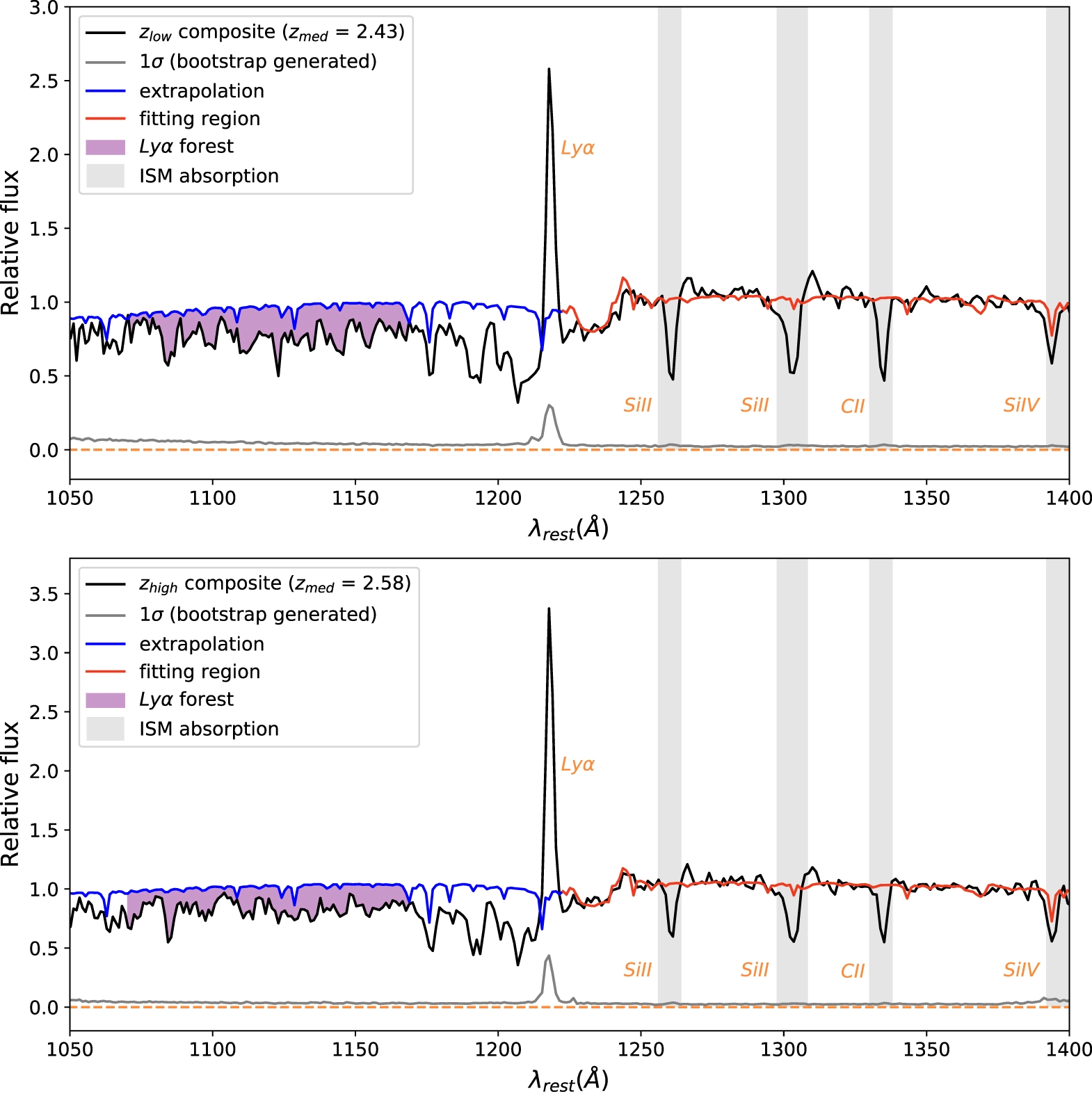Effective Opacity of the Intergalactic Medium from Galaxy Spectra Analysis
The intergalactic medium (IGM) is a diffuse gas, mainly consisting of ionized hydrogen and helium, that permeates the space between galaxies in the large-scale cosmic web. It is the IGM and not the galaxies it surrounds, that governs the large-scale structure of the universe. The IGM is highly ionized by the extragalactic ultraviolet background (EUVB) radiation field and takes the form of a diffuse plasma. The trace fraction of hydrogen gas that remains neutral is responsible for attenuating the radiation from the EUVB and producing the Lyα forest. We use composite spectra of 281 Lyman-break galaxies the COSMOS Lyα Mapping And Tomographic Observations (CLAMATO) survey to estimate the effective opacity of this nuetral fraction.
You can find the abstract on the publications tab!

Two composite or “stacked” CLAMATO spectra and their corresponding SED fits. The SED fits are two-toned, showing the region in which the fit is constrained by our data (red) and where the fit is extrapolated to measure the forest (blue). The excess flux in the model, blueward of Lyα, is caused by HI attenuation from the IGM. This excess is what we use to measure the effective opacity. The error spectrum is based on the bootstrap matrix and is plotted in gray. Some of the most prominent ISM transitions are denoted by gray bands and are not included in the fitting.
